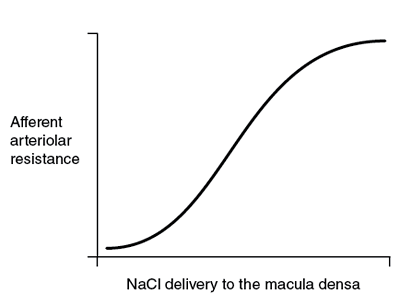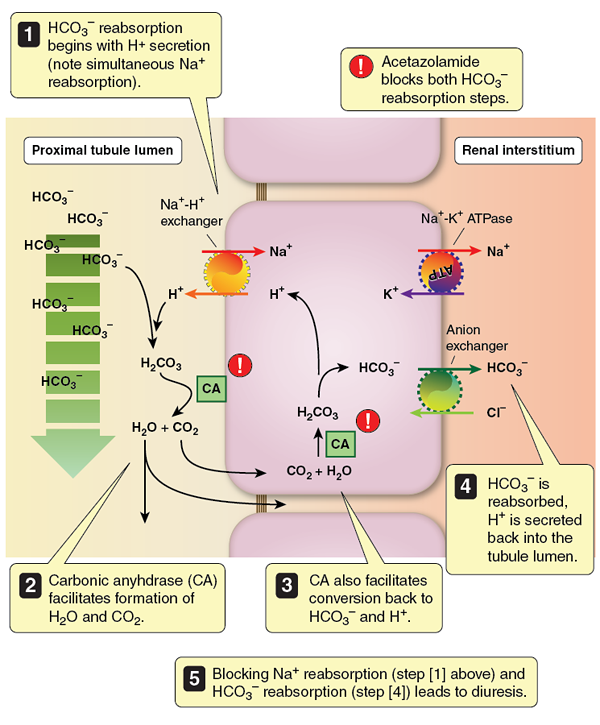If you’re preparing for the United States Medical Licensing Examination® (USMLE®) Step 1 exam, you might want to know which questions are most often missed by test-prep takers. Check out this example from Kaplan Medical, and read an expert explanation of the answer. Also check out all posts in this series.
The AMA and Kaplan have teamed up to support you in reaching your goal of passing the USMLE® or COMLEX-USA®. If you're looking for additional resources, Kaplan provides free access to tools for pre-clinical studies, including Kaplan’s Lecture Notes series, Integrated Vignettes, Shelf Prep and more.
This month’s stumper
The graph above shows that increased NaCl delivery to the macula densa raises glomerular afferent arteriolar resistance, a response mediated by tubuloglomerular feedback.
Which of the following diuretics will most likely produce the results shown in the graph?
A. Acetazolamide.
B. Amiloride.
C. Furosemide.
D. Hydrochlorothiazide.
E. Spironolactone.
The correct answer is A.
Kaplan Medical explains why
Acetazolamide inhibits carbonic anhydrase (CA) in the proximal tubule, thereby impairing HCO3̅ and Na+ reabsorption (see figure below) and causing an osmotic diuresis. One consequence is that the tubule fluid arriving at the macula densa is relatively sodium-rich, triggering a reflex increase in afferent arteriolar (AA) resistance.
The macula densa is a specialized region of the renal tubule located in the wall of the thick ascending limb (TAL) of the loop of Henle a short distance (less than 50 mum) before it transitions to the distal convoluted tubule. It is designed to sense tubule NaCl levels. Na+ and Cl- enter macula densa cells via the Na+-K+-2Cl- cotransporter (NKCC). Cl- then exits the cell via a basolateral Cl- channel causing depolarization and generating a sensory signal that travels within the juxtaglomerular apparatus to the glomerular arterioles. The AA constricts and the efferent arteriole (EA) dilates as a result, thereby reducing filtration pressure and glomerular filtration rate (GFR). Tubuloglomerular feedback (TGF) is designed to optimize GFR in the face of changing glomerular perfusion pressures. Acetazolamide thus mimics the effect of inappropriate increases in GFR in a healthy individual.
CA inhibitors cause a modest diuresis and natriuresis, but they also increase urinary HCO3- excretion, thereby raising urinary pH to about eight and causing a metabolic acidosis.
Why the other answers are wrong
Choice B: Amiloride is a K+-sparing diuretic that blocks the epithelial sodium channel (ENaC) that normally mediates Na+ reabsorption by principal cells in the distal segments. Amiloride does not affect TGF.
Choice C: Furosemide is a potent loop diuretic that inhibits NKCC and interferes with Na+, K+, and Cl- reabsorption in the TAL. The macula densa is located at the junction between the TAL and the distal tubule, so furosemide treatment inevitably exposes the macula densa to an increased NaCl load. One might thus expect the AA to constrict via TGF, but TGF relies on a functional NKCC. With NKCC blocked by furosemide, macula densa cells can no longer sense tubule NaCl levels and TGF is interrupted.
Choice D: Hydrochlorothiazide inhibits the Na+-Cl- cotransporter in the distal tubule, which is downstream of the macula densa.
Choice E: Spironolactone is a mineralocorticoid receptor antagonist that targets aldosterone receptors in the distal segments. It does not have a significant effect on NaCl transport in the macula densa or on TGF.
Tips to remember
- Acetazolamide blocks carbonic anhydrase, thereby inhibiting Na+, Cl-, and HCO3- reabsorption in the proximal tubule.
- The resulting osmotic diuresis increases NaCl delivery to the macula densa.
- Increased NaCl delivery constricts glomerular afferent arterioles through tubuloglomerular feedback.
For more prep questions on USMLE Steps 1, 2 and 3, view other posts in this series.





